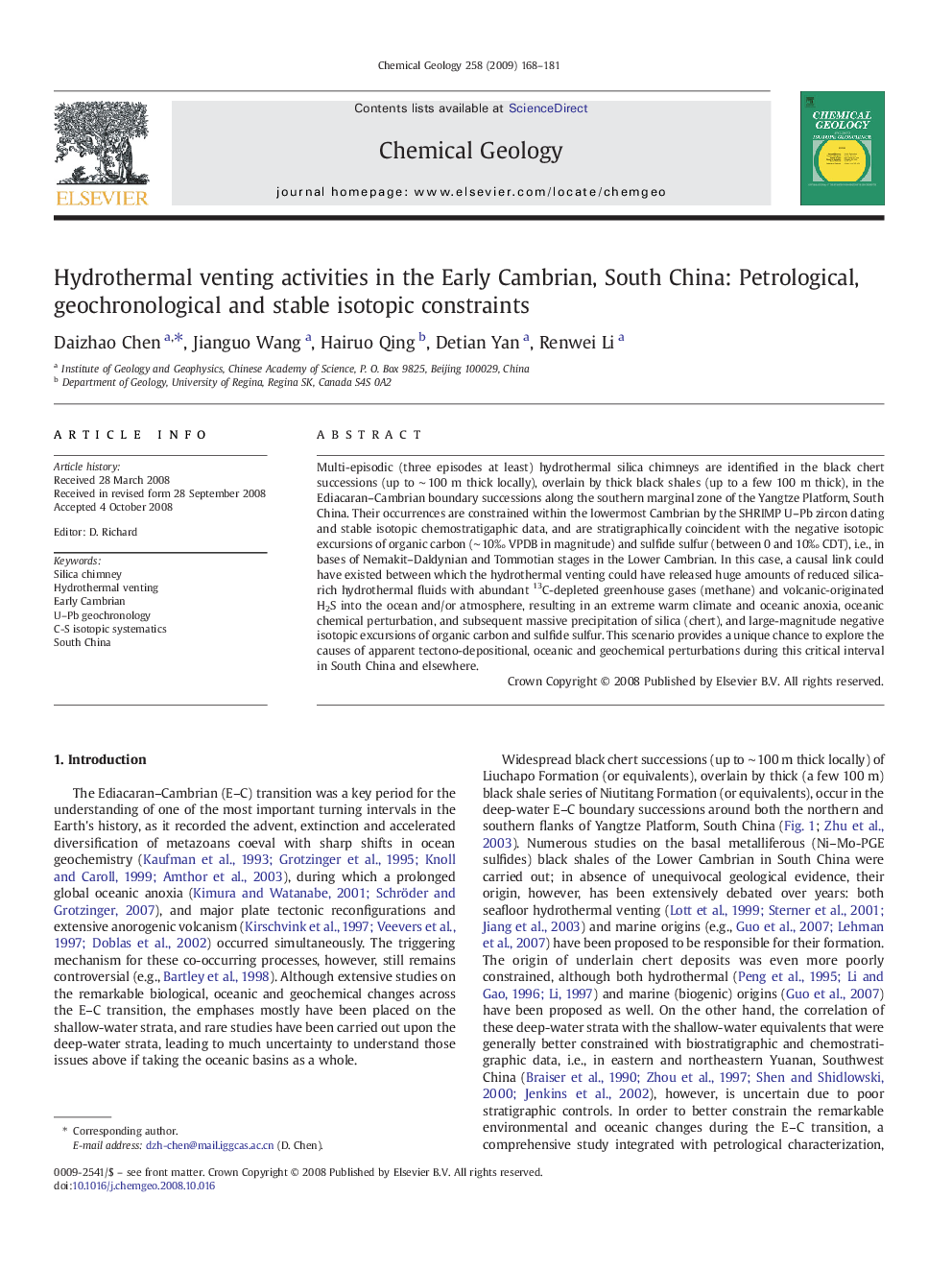| Article ID | Journal | Published Year | Pages | File Type |
|---|---|---|---|---|
| 4700420 | Chemical Geology | 2009 | 14 Pages |
Multi-episodic (three episodes at least) hydrothermal silica chimneys are identified in the black chert successions (up to ∼ 100 m thick locally), overlain by thick black shales (up to a few 100 m thick), in the Ediacaran–Cambrian boundary successions along the southern marginal zone of the Yangtze Platform, South China. Their occurrences are constrained within the lowermost Cambrian by the SHRIMP U–Pb zircon dating and stable isotopic chemostratigaphic data, and are stratigraphically coincident with the negative isotopic excursions of organic carbon (∼ 10‰ VPDB in magnitude) and sulfide sulfur (between 0 and 10‰ CDT), i.e., in bases of Nemakit–Daldynian and Tommotian stages in the Lower Cambrian. In this case, a causal link could have existed between which the hydrothermal venting could have released huge amounts of reduced silica-rich hydrothermal fluids with abundant 13C-depleted greenhouse gases (methane) and volcanic-originated H2S into the ocean and/or atmosphere, resulting in an extreme warm climate and oceanic anoxia, oceanic chemical perturbation, and subsequent massive precipitation of silica (chert), and large-magnitude negative isotopic excursions of organic carbon and sulfide sulfur. This scenario provides a unique chance to explore the causes of apparent tectono-depositional, oceanic and geochemical perturbations during this critical interval in South China and elsewhere.
